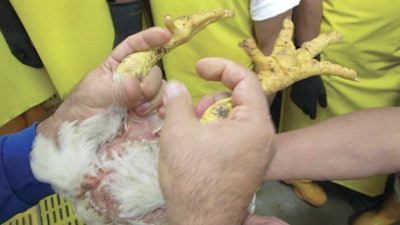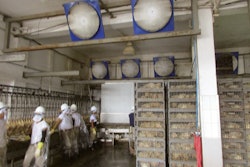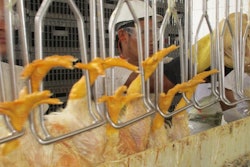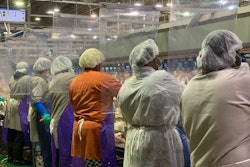
Paying attention to the small details can make all the difference in raising poultry processing plants’ productivity.
The current pandemic has taught us that, to reduce the risk of infection, we need to wear face masks, wash our hands and maintain social distance. However, we know that if these measures are not properly implemented, they will not offer us the full protection they are said to give. A similar situation arises in processing plants, where developing the habit of performing operations properly can prevent the bottom line being harmed.
It is also worth remembering that, where increasing productivity is concerned, optimizing raw material use and reducing operating costs are central. Focusing on details can help to achieve these goals and a thorough understanding of operations from pre-slaughter through processing can make this easier.
Rearing
Poultry houses should be carefully inspected to ensure that nothing can harm broilers. Wet litter, for example, along with interrupted feed or poorly circulating air can impact the quality of the processed bird.
Should problems be identified they need to be addressed quickly to prevent any impact on the flock. Technologies and systems exist that allow flocks to be monitored in real time and corrective action to be taken when problems arise.
Pre-slaughter
Stress will impact the quality of the processed bird and, during capture, there are two operations where birds commonly become stressed.
The speed at which harvesters walk will have an impact on birds’ stress levels. Broilers tend to walk slowly and if harvesters also walk slowly when making the enclosures, birds will not be disturbed by them.
Noise will also stress birds and can result in them panicking. When this occurs, more blood is pumped to the wings and thighs as part of the fight or flight response. If forklifts with internal combustion engines are used during harvesting birds’ stress levels will increase further still.
Once birds are in the cages or crates, they will become calmer and blood flow will normalize. If, however, on arrival at the processing plant they are again faced with high noise levels, the same process will occur – blood will be pumped to the thighs and wings. This is far more critical as there may not be time for a bird to return to its normal state prior to slaughter. On exiting the last plucker, its wings and thighs will be tinged red and this has an impact on quality.
Processing
There are often many areas in the processing plant where particular attention needs to be paid to ensure that operations are being properly conducted.
For example, hanging birds on the overhead conveyor needs to be done with care as, if not, legs will be damaged.
During passage on the overhead conveyor to the stunner, should lighting be too intense or the breast comforter not properly supported or graduated, birds will flap their wings resulting in bruising.
The stunner is another area where birds may suffer injury, due to the intense wing flapping that will occur should they touch the stun cabinet. In addition to wing bruising, a reddish ring bruise around the shoulder can occur if birds are repeatedly lifted and allowed to fall.
Wing flapping may also occur in the bleed tunnel, due to two factors in particular. If broilers are not thoroughly stunned they will experience intense pain and flap their wings intensely. Movements resulting in, albeit less harmful injuries, may occur if feed withdrawal has been insufficient. While hanging in the shackles, feed remaining in broiler will place pressure on the trachea, resulting in difficulties breathing. In response, birds will raise and lower their heads.
Scalding
To achieve a well-scalded bird, it must be securely hung on the shackles. If not, there is a likelihood that it will be lost in the scalder.
Plucking
If the various operations prior to plucking are not carried out correctly the quality of pluck will be affected. Additionally, if plucking machines are not well-maintained skin damage and joint dislocations may occur.

Paws have become a valuable commodity and damaging needs to be avoided. | Eduardo Cervantes López
In addition to ensuring that operations are carried out with the necessary care and attention, it is importation to keep a close eye on operational expenditure and there are many areas where simple changes can help to keep costs under control.
Lighting
Movement sensors have been available for over a decade and, in some plants, they are already in use in corridors and areas that are infrequently used. Their savings have been proved and their use could be extended to other areas.
Greater use of natural daylight could also be made along with energy derived from solar panels.
Scalding
Boilers may not be necessary to heat scalding tanks. Some plants are already using solar heaters to heat water. Scalding at a lower temperature can also save energy.
Water consumption
The water system using for cleaning tends to comprise a series of hoses that are rolled out in each section of the plant when needed. Too often, these hoses are not placed back on their stands after use. Water is wasted and the hoses wear out more quickly.
Some plants have overcome this issue through installation of a pumping station with equipment similar to that used in a carwash. The station is equipped with spray pistols and hoses and is connected to a single source of water in each section of the processing plant.
Use of such equipment has resulted in water savings and reduces the need to purchase replacement hoses.

















